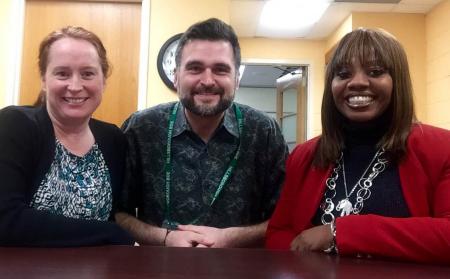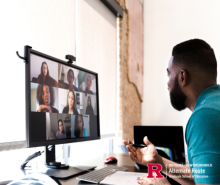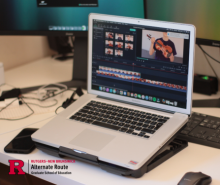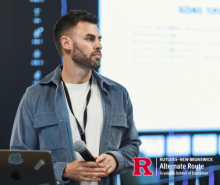Facilitating Personalized Instruction with 1:1 Learning Initiative
Edtech is transforming the teaching and learning process in schools across the nation. Mounting evidence has illustrated edtech’s positive impact on student learning; thus, district-wide technology initiatives are becoming more common. Each year, more and more districts are establishing programs that encourage teachers to adopt and integrate edtech into their teaching practice.
Synchronizing technology adoption at a district level is no easy feat. In Hillsborough School District, where we serve 7,700 students across nine schools, implementing a 1:1 technology initiative in less than five years was both challenging and rewarding. The technology implementation steps we took in our district aligned with well-validated, publicly accessible research. Although the actions set in our district’s five-year plan were plenty, our district leaders’ collaborative efforts to cultivate a culture that embraced innovation, to establish new professional development programs and to expand our technology infrastructure were the sources of our success.

Visionary Leadership and Collaboration are Paramount
Shortly after being appointed superintendent of Hillsborough Township Public Schools in 2011, Dr. Jorden Schiff announced a strategic five-year technology implementation plan. Under this plan, the district would implement a 1:1 technology initiative to facilitate asynchronous personalized learning, globalize our curriculum, and foster digital literacy through the creation and publication of digital content. Schiff’s vision was for every student in grades 5-12 to be given a device for school purposes by year 4 of the initiative, and for those in grades K-4 to have a device by year 5.
Through collaborative leadership, our school district rolled out devices a mere six months after the plan was announced, secured a large partnership with Google and met our progress milestones ahead of schedule. The success of our 1:1 initiative rested on the district upgrading our network infrastructure, equipping teachers to become digitally competent, and expanding our technical support structure.
Obtaining Stakeholder Buy-In
The success of our school district’s 1:1 initiative is the result of widespread stakeholder support. Many teachers and school staff initially feared that integrating devices into the classroom could discourage students from socializing, refining their penmanship, and proofreading amongst other things. Parents’ concerns were primarily focused on cyber safety and student productivity.
District leaders proactively held forums to educate teachers and parents on the many ways technology integration could positively impact student learning, and how they planned to ensure students use their devices safely and in the most productive manner. It did not take long for the community to embrace the changes that the 1:1 initiative would bring. Teachers began to understand that their classroom devices would allow them to access free and low cost digital resources, and parents grew increasingly comfortable with the district’s device-use monitoring plans.
Each of the devices given to students were set up with grade level appropriate web access filters. Students and parents were required to sign acceptable use policies. Through a personalized learning platform, teachers were able to monitor students’ activity on their devices. The concerns of teachers and parents organically dissipated over time. Now, every member of our community—teachers, school staff, students and parents—fully embrace change and innovation as part of our district’s culture.
IT Capacity Building
As our 1:1 initiative continued to evolve, so did our IT support structure. First, our Computer Support teaching staff experienced a shift in responsibilities. Prior to our 1:1 initiative, computer teachers spent more time directly instructing students. With the influx of devices, their roles shifted in focus to delivering instructional technology support to teachers, and troubleshooting hardware and software problems.
Further refining our technology support infrastructure, we hired Ralph Losanno, a graduate of the Rutgers CESP Alternate Route Teacher Training program, as our first-ever District Technology Coach. Losanno was charged with helping staff across all nine schools by providing teachers with personalized training, holding professional development focused group sessions and co-teaching classes. We also established a technology integration team to manage and support district-wide technology initiatives, including the 1:1 program, and a Turnkey Technology Training program that allows selected teachers to train their colleagues. Each school has two paid Turnkey Technology Trainers who lead peer group training sessions before and after school. Since the program’s launch 21 teachers have earned credentials as Turnkey Technology Trainers, leveraging the district’s 1:1 initiative as a pathway to teacher leadership.
Helping Teachers Build Digital Competency
Prior to introducing devices to students, we took many steps to ensure that our teachers were comfortable with this new hardware and adept in using digital technology for learning. We established a six hour edtech professional development requirement. Teachers could either attend our district-wide in-service days focused on technology, or attend Turnkey Technology Trainings facilitated by their peers before and after school. The trainings helped teachers learn to find appropriate and relevant apps, programs, and tools for use with students and for classroom management. As our tech support staff curate new resources, they incorporate them into our turnkey courses and individualized training program.
Socrative, Nearpod, Raz-Kids, and Google Docs have been most heavily adopted by our teaching staff. Noreen Ranallo, a Computer Teacher & Technology Support Person at Sunnymead Elementary School, found that teachers prefer to use apps that enable them to customize their content, offer formative or summative feedback, and provide opportunities for students to produce work.
Now, our teachers are far more digitally competent than when we first launched this initiative, especially those teaching early grade levels.The technology-related anxiety our teachers once had quickly dissipated as the school adopted a culture that embraced change, and developed a comprehensive technology support and teacher training model. Once students had a device, it really forced teachers to step up their game and find meaningful ways to engage students with technology. Our teachers’ marked improvement in their technical prowess is undeniable.
Early Results
Our teachers utilize various edtech apps, tools, websites, and programs to individualize instruction and rely less on lecture-based teaching. They commonly use formative and summative assessment tools to gather immediate feedback from students and direct their instruction. This allows our teachers to more effectively differentiate instruction and manage collaborative student work settings. Students as young as first graders are using Chromebooks for research, independent skill practice, and enrichment. Computer Teacher, Noreen Ranallo, remarked, “teachers can provide instruction that’s appropriate and rigorous without having direct contact with [students]”.
Our tech teams continuously collect feedback on how our district’s devices influence teachers’ instructional practice, and enable the district to meet the three tenets set out by the 1:1 initiative’s strategic plan—asynchronous learning, curriculum globalization and digital literacy.
–
Special thanks to Ralph Losanno, the District Technology Coach of Hillsborough School District and alum of Rutgers CESP’s Alternate Route Program, and Noreen Ranallo, a Computer Teacher & Technology Support Person at Sunnymead Elementary School of Hillsborough School District for sharing their lessons learned with the Rutgers Alternate Route community!







